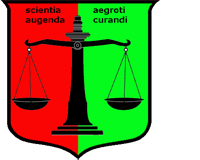Institute for Response-Genetics (e.V.)Chairman: Prof. Dr. Hans H. StassenPsychiatric Hospital (KPPP), University of Zurich |

|


|
Study of 12 Sib FamilyOur interest in the present study of a family consisting of 8 sisters and 4 brothers has a psychiatric background. We conjecture that investigations into the heredity of brain wave patterns may contribute to a better understanding of the complex familial aggregations of psychic illnesses. As compared to psychic illnesses, brain wave patterns exhibit a similar complexity on the trait level but on the other hand, they are "objectively" assessable, i.e. in a rater-independent way and in a standardized experimental setting. We therefore designed this study of a family with 8 sisters and 4 brothers in order to quantify the intra-familial phenotypic heterogeneity of EEG characteristics and to investigate the question of whether EEG characteristics are quantitative or qualitative traits. To this end, each individual was assessed twice at an interval of 14 days so that the reproducibility of results could be tested and the between-sib differences could be qualified with respect to the stability of the underlying parameters over time. Specifically, we addressed the following questions: (1) To what degree do EEG parameters posses trait-like qualities? (2) Are EEG parameters associated with qualitative or quantitative traits? (3) If quantitative, what is the distribution in the general population: unimodal? normally distributed? (4) Is the between-sib EEG similarity half the within-pair EEG similarity of monozygotic twins? EEG RecordingsOur family sample consisted of 12 healthy sibs (8 sisters, 4 brothers) raised in the same environment and ranging in age between 30 and 48 years. The probands were asked to fill out the "Zurich General Health" (ZGF) questionnaire which comprises 80 items and addresses lifetime consumption behavior, somatic disorders, psychosomatic disturbances and psychic impairment. For each of these probands EEGs were recorded twice at 14-day intervals under the condition of quiet wakefulness (eyes closed) using standard 10-20 electroencephalic lead placements. Each recording comprised 5 minutes of resting EEG derived from 6 parallel channels (P3-O1, P4-O2, T3-T5, T4-T6, T5-O1, T6-O2). Between-Sib SimilaritiesMost EEG parameters possess distinct trait-like qualities as indicated by a high specificity (informativeness) and by a high stability over time. Accordingly, these parameters were deemed to represent a sound basis for our investigation into the between-sib EEG similarities. Detailed analysis revealed a considerable between-sib variation. For example, with respect to "absolute alpha-band power" the 12-sib sample was partitioned into 5 subgroups: a subgroup of 3 sibs with parameter values around 180; a subgroup of 5 sibs with parameter values around 280; a subgroup of 2 sibs with parameter values around 380; a subgroup of 1 sib with a parameter value around 480; and a subgroup of 1 sib with a parameter value around 580. In terms of the variation observed in the general population, the variation found in this sib sample lay in the lower part of the distribution of the general population and covered nearly 50% of the total range. And this picture of high within-family variation was essentially the same for all parameters under consideration. References
Stassen HH, Bachmann S, Bridler R, Cattapan K, Herzig D, Schneeberger A, Seifritz E. Inflammatory
Processes linked to Major Depression and Schizophrenic Disorders and the Effects of Polypharmacy
in Psychiatry: Evidence from a longitudinal Study of 279 Patients under Therapy. Eur Arch
Psychiatry Clin Neurosci. 2021; 271(3): 507-520
[get the article]
Braun S, Bridler R, Müller N, Schwarz MJ, Seifritz E, Weisbrod M, Zgraggen A, Stassen HH:
Inflammatory Processes and Schizophrenia: Two Independent Lines of Evidence from a Study
of Twins Discordant and Concordant for Schizophrenic Disorders. Eur Arch Psychiatry Clin
Neurosci 2017; 267: 377-389
[get the article]
Braun S, Bridler R, Müller N, Schwarz MJ, Seifritz E, Weisbrod M, Zgraggen A, Stassen HH:
Inflammatory Processes and Schizophrenia: Two Independent Lines of Evidence From a Study
of Twins Discordant and Concordant for Schizophrenic Disorders. Neuropsychopharmacology
2016; 41: S414–S415
Stassen HH, Delfino JP, Kluckner VJ, Lott P, Mohr C: Vulnerabilität und psychische Erkrankung.
Swiss Archives of Neurology and Psychiatry 2014; 165(5): 152-157
Stassen HH, Angst J, Hell D, Scharfetter C, Szegedi A: Is there a common resilience mechanism
underlying antidepressant drug response? Evidence from 2'848 patients. J Clin Psychiatry 2007;
68(8): 1195-1205
Buckelmüller J, Landolt HP, Stassen HH, Achermann P: Trait-like individual differences in the
human sleep EEG. Neuroscience 2006; 138: 351-356
Weisbrod M, Hill H, Sauer H, Niethammer R, Guggenbühl S, Stassen HH: Nongenetic pathologic
developments of brain-wave patterns in monozygotic twins discordant and concordant for
schizophrenia. Am J Med Genetics B 2004; 125: 1-9
Stassen HH: EEG and evoked potentials. In: D. Cooper (ed) Nature Encyclopedia of the Human
Genome. Nature Publishing Group, London 2003; 3: 266-269
Umbricht D, Koller R, Schmid L, Skrabo A, Grübel C, Huber T, Stassen HH: How specific are
deficits in mismatch negativity generation to schizophrenia? Biol Psychiatry 2003; 53:
1120-1131
Dünki RM, Schmid GB, Stassen HH: Intraindividual specificity and stability of the human EEG:
Linear vs. nonlinear approaches. Meth Inform Med 2000; 39: 78-82
Stassen HH, Coppola R. Torrey EF, Gottesman II, Kuny S, Rickler KC, Hell D: EEG differences in
monozygotic twins discordant and concordant for schizophrenia. Psychophysiology 1999; 36,1:
109-117
Stassen HH, Bomben G, Hell D: Familial brain wave patterns: study of a 12 sib family. Psychiat
Genetics 1998; 8: 141-153
Dünki RM, Schmid GB, Scheidegger P, Stassen HH, Bomben G, Propping P: Reliable computer-assisted
classification of the EEG: EEG variants in index cases and their first-degree relatives.
Am J Med Genetics B 1996; 67,1: 1-8
Kaprio J, Buchsbaum M, Gottesman II, Heath A, Körner J, Kringlen E, McGuffin P, Propping P,
Rietschel M, Stassen HH: What can twin studies contribute to the understanding of adult
psychopathology? In: T.J. Bouchard jr. and P. Propping: Twins as a tool for behavioral
genetics. Chichester: John Wiley & Sons, Dahlem Workshop Reports, Life Sciences Research
Report 1993; 53: 287-299
Stassen HH, Lykken DT, Propping P: Zwillingsuntersuchungen zur Genetik des normalen
Elektroenzephalogramms. In: P. Baumann (ed): Biologische Psychiatrie der Gegenwart, Wien:
Springer 1993, 139-144
Stassen HH, Lykken DT, Propping P, Bomben G: Genetic determination of the human EEG (survey
of recent results from twins reared together and apart). Human Genetics 1988; 80:
165-176
Stassen HH, Lykken DT, Bomben G: The within-pair similarity of twins reared apart. Eur Arch
Psychiatr Neurol Sci 1988; 237: 244-252
Stassen HH, Bomben G, Propping P: Genetic aspects of the EEG: an investigation into the
within-pair similarity of monozygotic and dizygotic twins with a new method of analysis.
Electroenceph clin Neurophysiol 1987; 66: 489-501
Stassen HH: The similarity approach to EEG analysis. Meth Inform Med 1985; 24: 200-212
Stassen HH: Computerized recognition of persons by EEG spectral patterns. Electroenceph
clin Neurophysiol 1980; 49: 190-194
|
|

Similarity between spectral patterns as a function of frequency as derived from a comparison of (a) two very similar and (6) two dissimilar sibs. The spectral resolution is 0.25 Hz and the experimental condition quiet wakefulness with eyes closed. |
|
| [ Mail to Webmaster ] k454910@ifrg.ch |